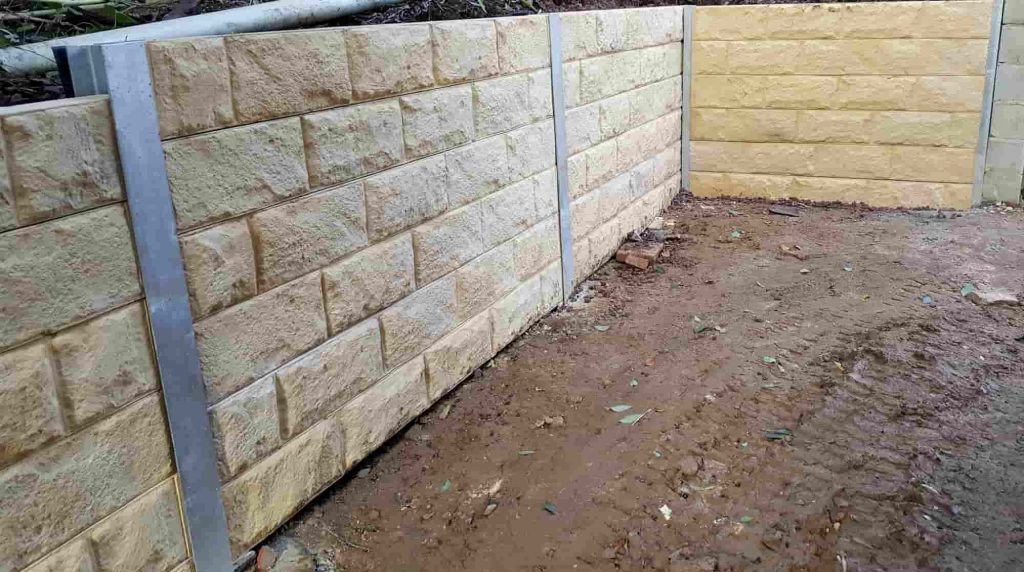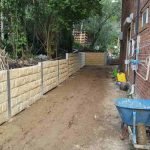Introduction
In the world of building and construction and landscaping, retaining walls play a crucial function in managing soil erosion, boosting aesthetics, and supplying structural assistance. However what goes into building these vital structures? That's where the knowledge of experienced retaining wall contractors comes into play. Whether you're looking for a retaining wall installer, a retaining wall contractor, or merely curious about the products utilized like concrete sleepers, H beams, wood sleepers, timber sleepers, or stone, understanding their engineering knowledge is vital.
Understanding the Engineering Competence of Knowledgeable Retaining Wall Builders
The process of building a retaining wall is more than simply stacking blocks or pouring concrete. It includes a deep understanding of soil mechanics, hydrology, and structural engineering concepts. Proficient retaining wall contractors possess not simply experience but also a selection of technical skills that enable them to navigate the complexities associated with this kind of construction.
When you consider it, every task presents special obstacles. The site conditions can vary commonly-- ranging from steep slopes to loose soils-- and this irregularity requires tailored solutions. A qualified retaining wall builder evaluates these factors diligently to pick the best design and materials. For example, when dealing with expansive clay soils that expand and contract based on wetness levels, specific strategies need to be used to avoid failure.
What Makes Retaining Walls Essential?
Retaining walls are basic for several reasons:
Soil Disintegration Control: They assist stabilize slopes and prevent soil displacement. Creating Usable Land: By leveling land, they expand functional space for gardens or patios. Aesthetic Appeal: Beautifully developed walls can boost residential or commercial property value. Water Management: They can direct water flow far from structures.These elements illustrate why hiring a skilled professional is vital for guaranteeing longevity and functionality.
Types of Keeping Walls
Gravity Walls
- These count on their weight to hold back soil. Typically made from concrete or stone.
Cantilevered Walls
- Utilize a lever arm developed to resist lateral pressure. Often built using strengthened concrete.
Anchored Walls
- Use cable televisions anchored in the earth behind the wall. Highly efficient for high-pressure situations.
Modular Block Walls
- Made from interlocking blocks held together by gravity. Easy to install and maintain.
Sheet Pile Walls
- Consist of thin sections driven into the ground. Commonly used in soft soil conditions.
Materials Used in Retaining Wall Construction
Concrete Sleepers
Concrete sleepers are robust products that offer durability and versatility in style. They're particularly efficient for modern aesthetic preferences while needing very little upkeep over time.
H Beams
H beams provide significant strength for taller walls where there's significant lateral pressure from soil. Their industrial design typically lends itself well to modern landscapes.
Wood Sleepers & Wood Sleepers
Wood-based choices provide an environment-friendly alternative however need cautious treatment against rot and pests. Lumber uses natural appeal however might necessitate regular maintenance to make sure longevity.
Stone Keeping Walls
Stone walls stimulate a sense of timelessness and can blend seamlessly with natural landscapes. However, they often https://postheaven.net/eferdonlxk/why-correct-planning-by-your-retaining-wall-contractor-is-crucial require higher labor expenses due to their elaborate setup processes.
The Function of Soil Mechanics in Structure Retaining Walls
Understanding soil habits is basic for any retaining wall builder. Soil types vary commonly-- sand drains pipes quickly while clay maintains wetness-- and each type has different load-bearing capabilities that affect how a wall will perform over time.
Why Do Various Soils Matter?
Clay soils can swell when damp, increasing pressure against walls. Sandy soils may shift all of a sudden without appropriate drain systems in place. Rocky surfaces might need specific devices for excavation or anchoring.An experienced contractor will carry out thorough site examinations, including soil tests, before deciding on requirements for materials and designs.
Hydrology Issues in Retaining Wall Design
Water management directly influences stability; pooling water behind a wall produces hydrostatic pressure that can result in devastating failures if not appropriately handled through drainage services like weep holes or French drains.
How Do Drainage Systems Work?
Weep holes enable excess water to escape. French drains pipes redirect water flow away from walls. Proper grading keeps water away from susceptible areas.Ignoring these aspects could result in pricey repairs down the line!
Cost Considerations When Employing a Retaining Wall Builder
Building a retaining wall isn't practically picking materials; it's likewise about budgeting successfully for both immediate costs and long-lasting maintenance expenditures related to various kinds of walls.
|Type|Typical Expense (per foot)|Longevity|Maintenance Level|| --------------------|-------------------------|------------|-------------------|| Concrete Sleepers|$20 - $30|50+ years|Low|| H Beams|$25 - $35|40+ years|Medium|| Wood Sleepers|$15 - $25|15 - 30 years|High|| Stone|$30 - $50|100+ years|Low|
Investing sensibly makes sure toughness without breaking the bank!
FAQ Section
What certifications should I search for in a keeping wall contractor?
Look for accreditations connected to building management, along with experience specific to retaining walls-- a portfolio showcasing past jobs helps too!
How do I figure out which product is best for my project?
Consider aspects such as place (soil type), desired aesthetics, budget restraints, and whether you choose low-maintenance alternatives over visual appeal.

What's involved in getting licenses for constructing maintaining walls?
Local regulations vary; usually, you'll need strategies submitted by your contractor revealing compliance with zoning laws before approval is provided by city organizers or other authorities.
Can I develop my own retaining wall?
While do it yourself tasks are possible, they require considerable knowledge about regional soils & & hydrology as well as engineering concepts; errors can lead to expensive repairs later on!
How long does it require to build a maintaining wall?
Depending on intricacy & & size-- expect anywhere from one weekend (for small modular jobs) up to a number of weeks (for bigger customized constructs).
Are there any environmental factors to consider when constructing a retaining wall?
Absolutely! Always ensure your job complies with regional regulations regarding wildlife environments & & run-off control procedures during construction activities!

Conclusion
In summary, comprehending the engineering proficiency of experienced retaining wall home builders is important whether you're planning your next home enhancement project or just want more insight into landscaping methods that secure your property financial investment! From recognizing different kinds of products-- like concrete sleepers or stone-- to comprehending hydrological effects and cost considerations-- all of it boils down to making informed choices backed by expert knowledge! So don't think twice; speak with professionals who bring years of experience together with ingenious options tailored particularly towards accomplishing enduring results!